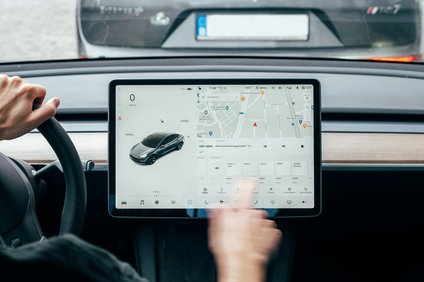Research - 20.12.2021 - 00:00
Do CEOs really stay in the job for too long?
Research shows that the value that CEOs create for shareholders starts to decline after 14 years in the job, but letting them go early may not always be the best decision. By Markus Schmid.

20 December 2021. How long should CEOs remain in office? And do some of them stay on for too long? This is an ongoing debate among academics and practitioners, often triggered by headlines about long-serving CEOs who perform badly and destroy company value. A recent example is Société Générale’s Frédéric Oudéa, who is currently the longest-serving CEO of a major European bank despite having overseen a 75% drop in the company’s share price during his 13-year reign, giving it the lowest price-to-book ratio of any European bank. Another example is Pierin Vincenz, CEO of Raiffeisen Schweiz for nearly 17 years. After successfully managing and growing the bank for many years, he became increasingly entrenched and self-serving, eventually resulting in criminal charges for disloyal management and corporate fraud. But kicking out a CEO too soon can also have its downsides. After nine years at the helm, UBS’s board of directors decided to replace Sergio Ermotti with Ralph Hammers, even though Ermotti’s final year in the role, 2020, ended up being the most successful in the bank’s recent history, raising the question of whether he was let go too early. Over on Wall Street, bosses appear to be digging in for the long-term. In September, Bank of America CEO Brian Moynihan signaled that he intends to stay in the role until the end of the decade, while the chief executives of JP Morgan Chase and Morgan Stanley have also indicated that they plan to spend lengthy periods at the top.
Can academic research inform this discussion and provide guidance on how to deal with CEO tenure and turnover issues? Looking at previous academic research on the topic, a mosaic of empirical evidence suggests that corporate outcomes – such as earnings management, firm-customer and firm-employee relationships, innovation, net investments, and profitability – vary over the CEO’s time in office. Yet this body of evidence does not provide a clear answer to a fundamental question: how does firm value vary over a CEO’s tenure?
The relation between CEO tenure and firm value is hump-shaped
To inform the question of whether there exists an optimal CEO tenure, in our study we bridge this gap in the literature in two ways. First, by looking at firm value, a comprehensive and forward-looking measure that captures the realized and expected net benefits of CEOs’ actions to shareholders (see box for more details on the specific measure of company value). Second, we provide evidence on the determinants of the CEO tenure-firm value association. We base our empirical predictions on key assumptions and findings from the theoretical literature in management and economics. The most explicit theory of CEO tenure and firm performance is Donald Hambrick and Gregory Fukutomi’s descriptive model of a CEO’s “seasons”. In their seminal work, Hambrick and Fukutomi argue that CEOs will contribute to firm performance positively over time as they increase their task knowledge and become more capable of making value-enhancing decisions. However, Hambrick and Fukutomi also argue that, the longer they stay in office, the more powerful CEOs become, ultimately making them less able to learn, and less engaged, leading to declining firm performance. Overall, they predict that the CEO tenure-firm value relationship is hump-shaped, with firm value first increasing and eventually declining in CEO tenure.
Our study is the first to provide systematic evidence of a hump-shaped CEO tenure-firm value relation, consistent with the predictions of Hambrick and Fukutomi’s descriptive model of a CEO’s seasons. For the average S&P 1500 firm, we find that the relation between CEO tenure and firm value increases for more than the first decade of a CEO’s tenure and starts to decline after about 14 years. We use several empirical tests to confirm that the hump shape is statistically significant and that it best fits the data. One major issue in empirical corporate finance and governance research is “endogeneity” which hampers any causal interpretation of results. In our setting, endogeneity concerns primarily arise because CEOs and companies are not matched randomly, but for reasons mostly unobservable to researchers. Similarly, many reasons for contract termination are unknown. These unobservable, and thus omitted, variables may result in biased estimation results. To mitigate such endogeneity concerns, we examine the stock market reaction following the announcement of sudden, unexpected CEO deaths between 1950-2017. Since these CEO deaths are exogenous to firm and market conditions, they allow us to observe how the market assessed the anticipated value contribution of these CEOs at the time of their deaths. We found that the market reacted more positively if the CEO had been in office for a longer period at the time of their death, independent of the CEO’s age and various observable CEO and firm characteristics. These results indicate that a CEO’s contribution to firm value declines in tenure and, at some point, even turns negative.
Cross-sectional variation: industry dynamism
In the second part of the study, we build on extant theoretical and empirical work to derive and empirically test cross-sectional predictions concerning the association between CEO tenure and firm value. First, we would expect that companies operating in a more dynamic environment will need leaders with ever-changing skillsets, making it more likely that the CEO will no longer meet the job requirements over time. Our results support this hypothesis and show that firm value peaks earlier during a CEO’s tenure in dynamic environments, such as industries with a higher degree of globalization or higher R&D expenditures. In more stable environments, firm value either peaks later during a CEO’s tenure or is positively associated with CEO tenure. As shown in the graph, the CEO tenure-firm value relationship is hump-shaped and peaks at 11 years in a dynamic industry environment – well before the average firms’ tuning point of 14 years. In contrast, in a stable market environment, the relationship is positive with higher tenure generally being associated with higher firm values. Examples of highly dynamic industries for the most part of our sample period are Computer Programming, Data Processing, and other Computer Related Services (Standard Industrial Clarification code 737), Electronic Components and Accessories (SIC 367), and Drugs (SIC 283).
Cross-sectional variation: CEO adaptability
Second, we posit that some CEOs may be more capable and/or willing to improve their skillset and repertoire during their tenure, thereby delaying their performance peak. Specifically, we expect CEOs with general managerial skills to be more likely to have the breadth of experience that enables them to respond to shocks and continue to be a good match for their firm. Consistent with this prediction, our results show that firm value peaks earlier during a CEO’s tenure for leaders who are less adaptable to change, namely specialist CEOs with relatively low general managerial skills, relatively older CEOs, and those who were appointed internally, while it peaks later for generalist CEOs and increases over tenure if they are younger or were appointed from outside the firm. As the graph shows, the CEO tenure-firm value relationship is hump-shaped and peaks at 13 years for those with a low “General Ability Index”. This index accounts for the number of previous company positions held by a CEO throughout his or her career, the number of firms and industries they have worked in, and whether or not they have had previous experience as a CEO of another company or have worked for a multi-division conglomerate. This index is widely used in the academic research to measure CEOs’ general skills that are transferable across firms and industries. Looking at CEOs with a high “General Ability Index”, we indeed find that the tenure-value relationship peaks significantly later, at about 16 years. More generally, results obtained from statistical tests in our study suggest that firm value peaks at a CEO tenure that is about 25% to 30% later than that of less adaptable CEOs.
Cross-sectional variation: labor market frictions
These two patterns raise the question of why boards would not just promptly replace CEOs when they have reached their peak? We predict that firms facing greater labor market frictions have a harder time attracting and retaining talented CEOs (who thus may negotiate more favorable terms that increase the cost of replacing them). Consistently, we find that firm value peaks earlier for CEOs of firms that are subject to greater labor market frictions, such as firms with more local peers that have a larger market capitalization or firms that experience a high number of IPOs within their industry. The graph illustrates this: firms subject to larger labor market frictions (as measured by the IPO activity within their sector) are associated with an earlier value-peak, at 12 years of CEO tenure. In contrast, the turning point at firms that are subject to little labor market frictions is at 21 years, well above the sample average. Examples of industries with large labor market frictions in our sample would be Computer Programming, Data Processing, and other Computer Related Services (SIC 737) or Commercial Banks (SIC 602) and examples of industries with low frictions are Motor Vehicles and Motor Vehicle Equipment (SIC 371) and Crude Petroleum and Natural Gas (SIC 131).
Summary: no recommendation for CEO term limits
The evidence we provide in our study adds to the longstanding debate about CEO term limits. Our results suggest that periodic CEO turnover can be valuable for shareholders because even successful leaders, who were good initial matches for their firms, may be associated with declining firm value over the later course of their tenure. However, our findings do not support a fixed policy of CEO term limits or general voting recommendations against high-tenure CEOs by proxy advisors given that the tenure-firm value relation differs considerably across firms and CEOs. Furthermore, while we find an average turning point of approximately 14 years, it should be noted that in recent years the majority of CEOs leave or are let go before that “peak”. Hence, in many cases a longer tenure would be beneficial for company performance and increase shareholder value. Sergio Ermotti may be just one of many examples of a CEO who was replaced too early, with his most productive years yet to come.
This article is adapted from a study which appeared in the November 2021 issue of The Accounting Review, and is joint work with Francois Brochet (Boston University), Peter Limbach (University of Bielefeld), and Meik Scholz-Daneshgari (Karlsruhe Institute of Technology). The complete paper is available for download.
Markus Schmid is Professor of Corporate Finance at the University of St.Gallen and Member of the Board of the Swiss Institute of Banking and Finance s/bf-HSG and of the School of Finance. His research focuses mainly on empirical corporate finance, corporate governance and household finance. Since 2012, he has been managing editor of the Financial Markets and Portfolio Management Journal.
This article originally appeared in I by IMD.
Image: Adobe Stock / olegzaicev
More articles from the same category
Discover our special topics











